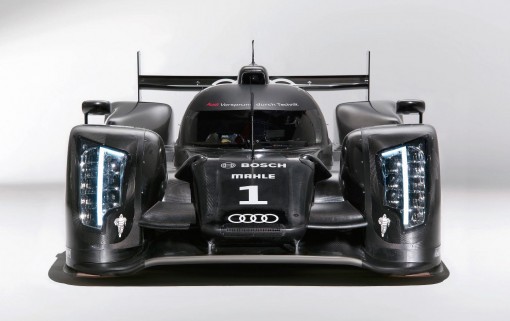Audi trips the light fantastic ready for Le Mans
STRIKING illuminations may be the norm at this time of year, but the spectacular light clusters on Audi’s latest racing car will be a distinguishing feature which will become familiar to motorsport fans.
The unique LED daytime running lights belong to the Audi R18, the sports prototype created to campaign in the Le Mans 24 Hours marathon in 2011, where Audi will be aiming for its tenth victory in the gruelling endurance classic.
Their design isn’t simply a flight of fancy by Audi light designers – each light forms the shape of a “1”, which is intended to inspire associations with one of the first iterations of the Audi brand logo dating back to 1922.
The daytime running lights form part of the Audi R18’s headlamp units, which provide intensity of illumination but also operate more efficiently than conventional units, reducing the draw on the alternator and consequently cutting fuel usage even further.
Developed through close cooperation between Audi Sport and the Technical Development (TE) division of Audi AG, these latest generation units will be prepared for future use in Audi production vehicles.
Since its debut in 1999, Audi has won the world’s most important endurance race nine times with the R8, R10 TDI and R15 TDI models, equalling Ferrari in the race’s roll of honour in the process. In its bid for a tenth victory, Audi Sport will field a closed coupe for the first time since 1999, profiting from the significant efficiency benefits this more aerodynamic format brings.
Diesel continues to be the fuel of choice for Audi Sport, and has been proving its worth since the Audi R10 TDI became the first diesel-powered sports prototype ever to win at Le Mans in 2006. In 2011, though, new regulations have necessitated a substantial reduction in engine power, and as a result the 5.5-litre ten-cylinder TDI powering the Audi R15 TDI has been replaced by a 3.7-litre V6 TDI.
In the same way that many valuable advances in engine, chassis and construction technology have been honed on the race circuit before filtering through to Audi road cars, so the numerous lessons learned this time by Audi engineers in ‘downsizing’ while maximising performance and efficiency will also inform future projects. Audi Sport is based ‘in-house’ at the brand’s Ingolstadt production facility in Germany.

